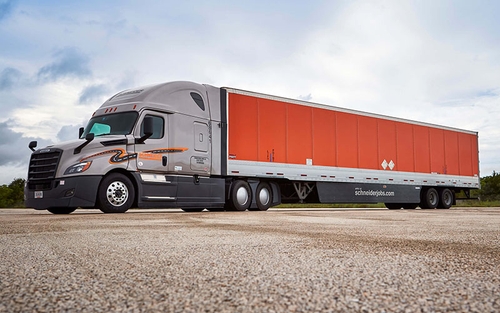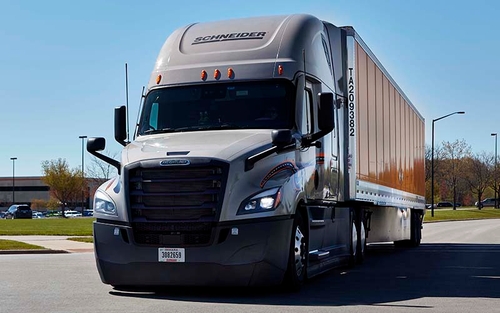What impacts semi-truck stopping distance?
How long a semi-truck takes to stop is dependent on many factors beyond just the speed it’s traveling at.
Some of the variables that impact stopping distance include:
- Weight: The heavier the truck, the longer it will take to stop. Due to the extra weight, it becomes more difficult for the brakes to generate enough friction to bring the truck to a full stop.
- Road conditions: Icy, wet and uneven roads can increase stopping distances since it’s harder for tires to grip the road.
- Weather conditions: Snow, rain and fog can make roads slicker and lower a driver’s visibility.
- Tire/brake conditions: Worn or damaged tires and brakes make it harder for a semi-truck to stop.
- Load distribution: The way freight is distributed throughout the trailer can impact stopping distance. Unevenly distributed loads make it harder to brake effectively.
- Road gradient: When traveling down a steep gradient, stopping distance increases.
- Reaction time: The time it takes for a driver to react and apply the brakes can also impact stopping distance.
What is a safe following distance for semi-trucks?
The proper following distance for semi-trucks is seven to eight seconds. Drivers should strive to maintain this distance and be ready to double it when the weather gets worse.
Another part of space management for truck drivers is stopping 20 feet behind other vehicles at traffic lights, stop signs and railroad crossings. This will allow you to have enough room to get around the vehicle in front of you if it becomes disabled.
How do you calculate the following distance for a semi-truck?
To calculate your following distance, you can:
- Watch the vehicle in front of you pass a fixed object such as a tree, light pole or a sign on the side of the road.
Count the seconds until you have reached the same object.
This will tell you how many seconds of following distance there are between you and the vehicle in front of you.






